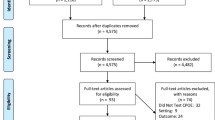Abstract
Introduction To assess the frequency of medication errors (ME) induced or enhanced by computerized physician order entry (CPOE). Error type, drug classes involved, specialty, patient outcome and system failures were also evaluated. Methods Observational quantitative study in a large tertiary care medical center over March 2012 3 years after CPOE implementation. Pharmacists detected ME associated with CPOE (those that wouldn’t have occurred if the clinician had prescribed manually) and unassociated in pharmacological treatments in inpatients of 13 specialties (421 beds). Main outcome measured were ME associated and unassociated with CPOE. Results We found 714 ME with 85.857 drug prescriptions (a 0.8 % error rate, 95 % CI 0.6–0.7). Percentage of error associated with CPOE was 77.7 %. The main types of error related to CPOE were wrong medication selection (20.9 %) and improper data placement (20.3 %). Failures with medications prescribed in primary care, unavailable in the hospital pharmacy, were involved in 21.6 % of all ME. Errors involving surgical specialties were double those involving medical specialties (1.2 vs. 0.6 %). Most ME associated with CPOE were potential errors (90 %). During the study system failures occurred four times. Conclusions The use of CPOE minimises the occurrence of medication errors, however, they still occur. Most errors are associated with the CPOE technology. We therefore face a new challenge in the prevention of ME that require a change in strategy for patient safety. Continued training of prescribers, standardization of the electronic prescription programs and integration between computer applications in hospitals and with primary care should be a priority.



Similar content being viewed by others
References
Poon EG, Keohane CA, Yoon CS, Ditmore M, Bane A, Levtzion-Korach O, et al. Effect of bar-code technology on the safety of medication administration. N Engl J Med. 2010;362:1698–707.
Bobb A, Gleason K, Husch M, Feinglas J, Yarnold PR, Noskin GA. The epidemiology of prescribing errors. The potential impact of computerized prescriber order entry. Arch Intern Med. 2004;164:785–92.
Leape LL, Brennan TA, Laird N, Lawthers AG, Localio AR, Barnes BA, et al. The nature of adverse events in hospitalized patients. Results of the harvard medical practice study II. N Engl J Med. 1991;324:377–84.
Bates DW, Cullen DJ, Larid N, Peterson L, Small SD, Servi D, et al. Incidence of adverse drug events and potential adverse drug events. Implications for prevention. JAMA. 1995;274:29–34.
Bates DW, Kuperman G, Teicc JM. Computerized physician order entry and quality of care. Qual Manag Health Care. 1994;2:18–27.
Bates DW, Leape LL, Cullen DJ, Laird N, Petersen LA, Shea B, et al. Effect of computerized physician order entry and a team intervention on prevention of serious medication errors. JAMA. 1998;280:1311–6.
Villamañán E, Herrero A, Álvarez-Sala R. Prescripción electrónica asistida como nueva tecnología para la seguridad del paciente hospitalizado. Med Clin (Barc). 2011;136:398–402.
Villamañán E, Herrero A, Álvarez-Sala R. The assisted electronic prescription in patients hospitalized in a chest diseases ward. Arch Bronconeumol. 2011;47:138–42.
Villamañán E, Larrubia Y, Ruano M, Herrero A, Álvarez-Sala R. Strategies for improving documentation and reducing medication errors related to drug allergy. Int J Clin Pharm. 2011;33:879–80.
Bates DW, Grawande AA. Patient safety. Improving safety with information technology. N Engl J Med. 2003;348:2526–34.
Kaushal R, Jha AK, Franz C, Glaser T, Shetty KD, Jaqqi T, et al. Return on investment for a computerized physician order entry system. J Am Med Inf Assoc. 2006;13:261–6.
Ash JS, Berg M, Coiera E. Some unintended consequences of information technology in health care: the nature of patient care information system-related errors. J Am Med Inf Assoc. 2004;11:104–12.
Berger RG, Kichak JP. Computerized physician order entry: helpful or harmful? J Am Med Inf Assoc. 2004;11:100–3.
Harrison MI, Koppel R, Bar-Lev S. Unintended consequences of information technologies in health care—an interactive sociotechnical analysis. J Am Med Inf Assoc. 2007;14:542–9.
Horsky J, Kuperman GJ, Patel VL. Comprehensive analysis of a medication dosing error related to CPOE. J Am Med Inf Assoc. 2005;12:377–82.
Koppel R, Metlay JP, Cohen A, et al. Role of computerized physician order entry systems in facilitating medication errors. JAMA. 2005;9(293):1197–203.
Weiner J, Kfuri T, Chan K, Fowles J. “e-Iatrogenesis”: the most critical unintended consequence of CPOE an other HIT. J Am Med Inf Assoc. 2007;14:387–8.
Kaushal R, Kaveh S, Bates DW. Effect of computerized physician order entry and clinical decision support systems on medication safety: a systemic review. Arch Intern Med. 2003;163:1409–16.
Koppel R, Metlay JP, Cohen A, Abaluck B. Russel Localio A, et al. Role of computerized physician order entry systems in facilitating medication errors. JAMA. 2005;293:1197–203.
Campbell EM, Sitting DF, Ash JS, Guappone KP, Dykstra RH. Types of unintended consequences related to computerized provider order entry. J Am Med Inf Assoc. 2006;13:547–56.
National Coordinating Council for Medication Error Reporting and prevention. NCCMERP. Taxonomy of medication errors. (Accessed 5 April 2013 at http://www.nccmerp.org/medErrorTaxonomy.html).
Ammenwerth E, Schnell-Inderst P, Machan C, Siebert U. The effect of electronic prescribing on medication errors and adverse drug events: a systematic review. J Am Med Inf Assoc. 2008;15:585–600.
Singh H, Mani S, Espadas D, Petersen N, Franklin V, Petersen LA. Prescription errors and outcomes related to inconsistent information transmitted through computerized order-entry: a prospective study. Arch Intern Med. 2009;169:982–9.
Evans RS, Pestotnik SL, Classen DC, Clemmer TP, Weaver LK, Orme JF Jr, et al. A computer-assisted management program for antibiotics and other antiinfective agents. N Engl J Med. 1998;338:232–8.
Eslami S, Keizer N, Abu-Hanna A. The impact of computerized physician medication order entry in hospitalized patients—a systemic review. Int J Med Inf. 2008;77:365–76.
Halpern SD, Ubel PA, Asch DA. Harnessing the power of default options to improve health care. N Engl J Med. 2007;357:1340–4.
Funding
No special financial support was obtained for this study.
Conflicts of interest
The authors have no conflict of interest.
Author information
Authors and Affiliations
Corresponding author
Rights and permissions
About this article
Cite this article
Villamañán, E., Larrubia, Y., Ruano, M. et al. Potential medication errors associated with computer prescriber order entry. Int J Clin Pharm 35, 577–583 (2013). https://doi.org/10.1007/s11096-013-9771-2
Received:
Accepted:
Published:
Issue Date:
DOI: https://doi.org/10.1007/s11096-013-9771-2




